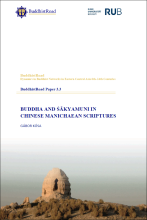BuddhistRoad Paper 3.3 "Buddha and Śākyamuni in Chinese Manichaean Scriptures"
Synopsis
During his missionary journeys beginning around ca. 240, Mani (ca. 216–276/277), the founder of Manichaeism, visited regions where Buddhism had already been present, and thus he may have become familiar with certain Buddhist concepts. Mani’s disciple, Mār Ammō (fl. 3rd c.) and subsequent generations of missionaries in Central Asia and China sought to accommodate the Manichaean message to the local Buddhist environment. This feature, to varying extent, characterised Parthian, Sogdian, Uyghur, and Chinese texts. In this paper, I focus on two fundamental terms, buddha and Śākyamuni, to show how they are used in early and later Manichaean sources.
Chinese Translation
约公元240年前后,摩尼教创始人摩尼(约216-276/277年)开启其跨地域布道之旅,其行经区域多属佛教文化辐射区。有鉴于此,摩尼极可能在此期间接触并吸纳了若干佛教思想元素。及至中亚与中国传教阶段,以马尔·阿莫(活跃于三世纪)为代表的摩尼教门徒及其后继者,始终致力于将本宗教义理调适融合于佛教文化语境之中。这一特点在不同程度上体现在帕提亚语、粟特语、回鹘语及汉语典籍中。本文以"佛陀"和"释迦牟尼"两个基础术语为核心,系统考辩其在摩尼教早期经典与后期文献中的语义嬗变。

Downloads
Published
Categories
License

This work is licensed under a Creative Commons Attribution-NonCommercial-NoDerivatives 4.0 International License.

